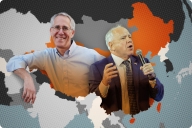You have /5 articles left.
Sign up for a free account or log in.
Calls to transform the European Union’s research repository into a “collective, non-profit, large-scale publishing service for the public good” that could rival commercial publishers have been described as “naïve” and a distraction to the open-access mission by experts.
Amid growing unease over the high cost of several national open-access deals, including Springer Nature’s new three-year agreement with British universities, the European Council was set to agree a motion that says “immediate and unrestricted open access” without author fees should become the “norm” in scholarly publishing.
The European Commission, which runs the 105 billion euro ($114 billion) Horizon Europe research funding program, should introduce funding policies to support open-access publishers that do not charge author fees, it adds. That might mean Horizon funding being tied to publication in so-called diamond journals, which are both free to read and publish in thanks to subsidies from universities, governments or other funders.
The memo, first presented by the Swedish presidency of the E.U. in February, also suggests a massive scaling-up of the E.U.’s open-access platform Open Research Europe (ORE), a site launched in 2021 that has fewer than 500 publications so far.
That proposal received a mixed response from the League of European Research Universities (LERU), which noted the scale of the proposed project was “massive” and a “single pan-European system is not likely to work successfully.”
Instead, the umbrella body suggested that what “Europe may really need is the development of an open, inter-connected, publicly owned infrastructure,” and urged the creation of funding calls to support university engagement with this kind of system.
Paul Ayris, pro vice provost at University College London (library, collections, culture and open access), who helped to draft LERU’s statement, said dissatisfaction was growing with transformative agreements because they “baked high costs into the system” and lower-income countries could not the afford article-processing charges in excess of 8,000 pounds ($9,963) charged by prestige titles.
“We need an international debate that bypasses transformative agreements—everything should be up for grabs,” said Ayris, adding a “different discussion about supporting different infrastructure” was required.
However, Sudip Parikh, chief executive officer of the American Association for the Advancement of Science, which runs the Science family of journals, said the idea of creating a “parallel infrastructure” for publishing “in a way that would be creative and responsive to the scientific community was naïve.”
“I’m excited to think what publishing will be like in 15 years’ time, when you consider how Twitter, AI, preprints and other digital platforms might relate to each other. But you’ll stunt that growth if you attempt to replicate what we have today,” said Parikh. “When governments envisage such solutions, things don’t get built for creativity or innovation—it’s the equivalent of a state version of the internet or the iron lung used for polio.”
Robert-Jan Smits, president of Eindhoven University of Technology, who, as director-general of research and innovation at the European Commission, led the Plan S initiative to mandate open access, said he understood the current frustration over rising costs but did not agree with the council’s proposed solution, saying the statement lacked “robust and concrete measures.”
“Although ORE and the European Open Science Cloud are laudable initiatives, they will not be the game changers that are more than ever needed to move rapidly to open access,” said Smits. “Nor are the diamond route or not-for-profit models—the level of investment necessary to make these outlets a success is tremendous.”
Instead, he said, the E.U. should work with the U.S., which has published its own Nelson memo to accelerate open access, to bring about global change. He added that he opposed extending so-called transformative agreements beyond 2024.
“The only way forward is to stick to the principles originally defined and agreed upon by cOAlition S: make 2024 the year in which the transition will be completed and join up with the federal agencies in the United States to get this done, even if this would take one additional year.”
Attempting to reinvent scientific publishing without commercial companies was destined to fail and would only slow the switch to open access, Smits added, although he urged the commission to reconsider plans contained in the original version of Plan S for a two-year cap on article-processing charges.
“Let’s also be clear on one thing: open-access publishing does not mean free open-access publishing,” said Smits. “There always will be a bill that someone has to pay for the work to be done, even with the diamond route, whether this is the funding agency, the institution or the researcher him or herself from the grant or through other means, such as his or her own time.
“So no more pilots of new publishing models and mutual learning exercises, but Plan S–type, game-changing measures. If Europe’s science ministers are really serious about open access, they should agree on measures that will finish the job once and for all.”








